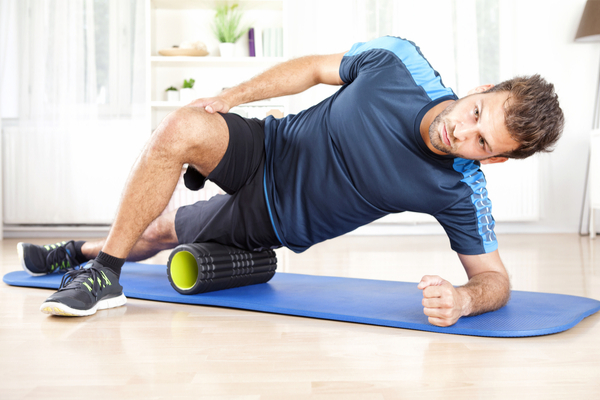Walking is great exercise. It’s safe on joints, easy to do, costs nothing, and is a great all-around way to keep our bodies moving, which is what they were designed to do. But along with the movement, comes the stretching component, which is just as vital to our longevity and wellness. According to Harvard Health, “stretching keeps the muscles flexible, strong, and healthy, and we need that flexibility to maintain a range of motion in the joints. Without it, the muscles shorten and become tight. Then, when you call on the muscles for activity, they are weak and unable to extend all the way.”
But when it comes to stretching before and after walking, not just any stretch will do. As NBC’s The Today Show reports, there are very specific ways to stretch before and after a walk to optimize performance, reduce injury and increase flexibility.
Before your walk: focus on dynamic stretching
“Dynamic stretching is where we use a move in a dynamic (moving) fashion to help the joint and muscle work through greater ranges of motion,” says Joe Holder, a Nike Master Trainer and performance coach. It’s different from static stretching because you never hold the stretch, but instead actively move through it, he said.
“Since dynamic stretching seems to help increase ranges of motion in short term, and can help wake up both the body and mind, we typically suggest people do this as part of their pre-workout routine or a nice energizer in the morning once they get out of bed to help kick start the day,” said Holder. “The moves are typically a little bit more specific to the activity we are about to engage in, which provides benefits in performance and feeling good.” He added that dynamic stretching is great to pair with foam rolling. “Foam roll for a few minutes and then hit dynamic stretching before a workout,” he said. Holder suggested adding these dynamic stretches to your pre-walk routine:
- Hinge to reach: Start standing with feet together; bend the knees slightly. Hinge at the hips, lowering your upper body toward the ground at a 45-degree angle and reach both arms back behind you with palms up. Then, stretch up tall, straightening the legs and coming up onto your toes, reaching both arms straight up overhead. Continue alternating between the hinge and reach motion for at least 20 seconds.
- Lateral lunge with a crossbody reach: Start with your feet slightly wider than hips-width apart. Step the right foot out to the right, bending the right knee slightly to sink into a half lunge. At the same time, reach the left arm across the body, feeling the twist in your torso. Return to center. Then, step the left foot out to the left, bending the left knee slightly to sink into a half lunge. At the same time, reach the right arm across the body, feeling the twist in your torso. Continue alternating sides for at least 20 seconds.
After your walk: focus on static stretching
“Static stretching, named ‘static’ essentially because we cling and don’t move, is where we hold ranges of motion for an extended period of time in our stretch. This is usually for 10+ seconds and sometimes up to two minutes dependent upon goals,” said Holder. “Static stretching got a bit of a bad rap in the sports world because short term, it can decrease power and performance output in some cases. However, for most people, this decrease would be negligible for the everyday athlete.”
Holder suggested performing static stretches after a workout to help cool down. They “calm the nervous system down … we can use this briefly post workout as a little ‘doorway’ into the rest of our day,” he said. Static stretches work well when paired with breathing exercises or as a standalone flexibility routine outside of your standard workouts. “These typically will lead to getting used to being more active generally and improved quality of life and athletic performance!” Holder added.
Holder suggested adding these static stretches to your post-walk routine:
- Toe touch:Stand with your feet hips-width apart and arms at your sides. Slowly hinge at the waist, rounding your back to reach your arms down toward your toes. Keep your legs straight and hold the stretch for at least 20 seconds.
- Half-kneeling hip opener:Start kneeling on both legs. Then, place one foot flat on the ground in front of you, creating a 90-degree angle at the knee. Push down gently on the front leg with both hands to activate your core and squeeze the back glute. Drive your hips forward (do not bend at the low back) into the front leg, feeling the stretch in your hip. Hold for at least 20 seconds. Switch sides.
—
Photo Credit: Sebastian Gauert / Shutterstock.com
